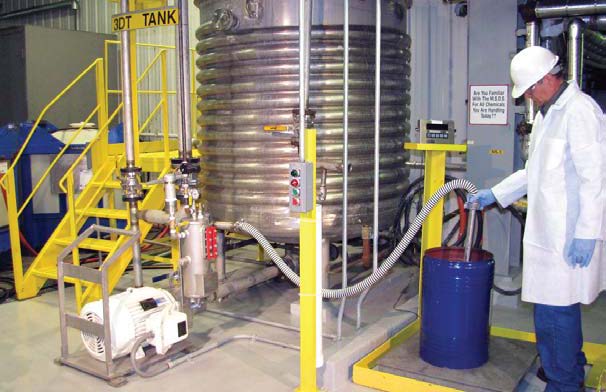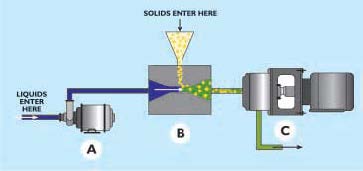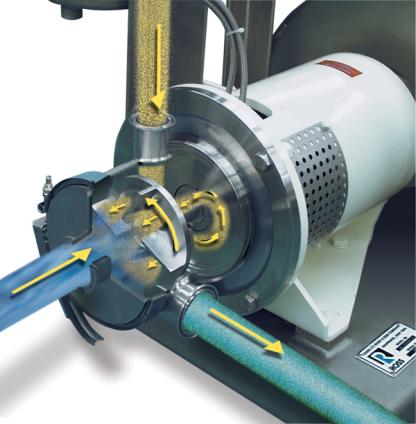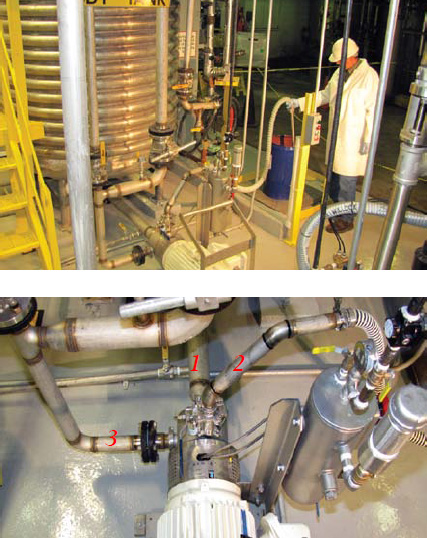Tech Report
Eductor-less powder induction systems offer improved processing reliability.

Technology Brief
In traditional eductor-based powder induction systems, balancing the performance of the main components - pump, eductor and mixer - often requires a skilled operator and can prove to be difficult. A high speed powder injection unit utilizing just one device to perform all three functions is simpler to use and offers a more reliable performance.
Operating theory of eductor systems
The use of eductor-based powder induction systems in inline operations emerged from the need to eliminate dusting and floating issues often encountered in batch mixing tanks. They operate based on the venturi principle: a pump (A) accelerates liquid into an eductor (B) creating a vacuum; powder fed through an overhead tube is drawn by this vacuum into the eductor where it joins the liquid flow; finally, a rotor/stator device (C) mixes the powder and liquid, and propels the flow downstream.

Limitations of eductor systems
The theory is sound but in practice balancing the performance of the pump, eductor and mixer is often difficult. In many applications, downtime is quite high due to routine clogging. The system is temperamental and requires a lot of operator experience and attention to operate successfully. With three separate devices in series, clean-up and maintenance are intensive.
Simpler design offers greater reliability
The Solids/Liquid Injection Manifold (SLIM) addresses the above limitations by utilizing a specially designed rotor/stator device that executes the functions of both the pump and the eductor. The ported rotor generates an intense vacuum which draws powders right into the high shear zone of the mix chamber, where they are dispersed instantly with the liquid stream. An auxiliary pump and eductor are not required.
Operation is simpler and more straightforward - just turn on the mixer and start inducting powders. Because solids and liquids are combined and mixed simultaneously in the SLIM, the formation of agglomerates and clogging are prevented.
How the SLIM technology works

The above illustration shows how an inline SLIM mixer works. The liquid stream (1) enters the mixer and immediately encounters the powder addition. Drawn into the mixer by a powerful vacuum, the powder (2) is injected through the ported rotor directly into the high shear zone. The resulting dispersion (3) is expelled centrifugally through the stator openings at high velocity.
SLIM Installation Snapshots:

In this SLIM installation, an operator uses a wand assembly to draw powders from within the bulk container which sits on a scale. The mixer recirculates the product through the 1000-gal vessel and pumps it downstream during discharge.
The second photo shows the three connections to the SLIM mixer: (1) Liquid, (2) Powders, and (3) Resulting Mixture.